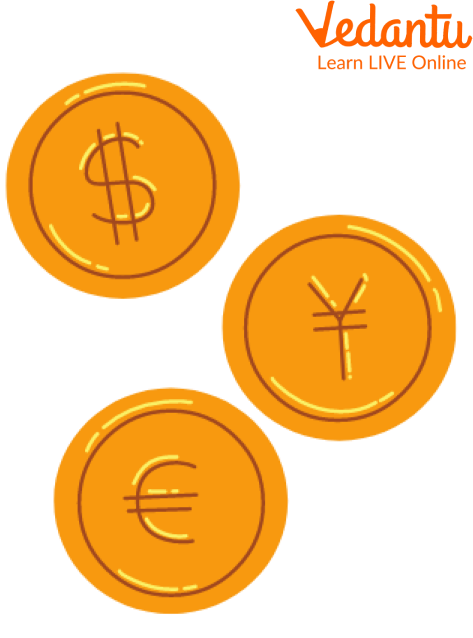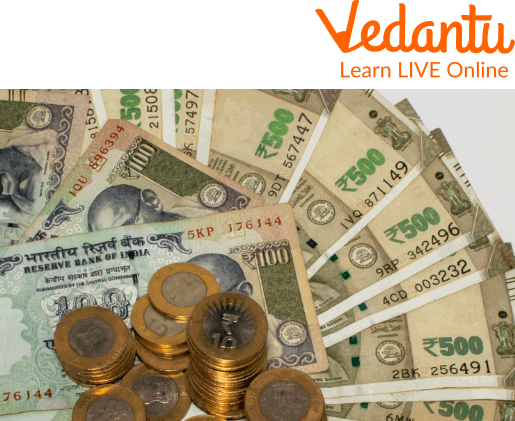




Step-by-Step Guide to Recognizing and Using Money Names
Imagine it's the end of your summer vacation and your school is reopening. You ask your mum for new bags, books, shoes, and crayons. You went into the mall to shop with your mother. There you pick all the required items and paste it into your shopping card. Now you go on to the counter to scan items. What do you think the counterman would ask you in return for those items? Yes, it is the money.
Money is a medium of exchange accepted all over the world for any goods or services. Mostly, everything that you buy and sell on this earth is through money. Every country has its own currency but in this article will talk about Indian currency, Indian money names and how to count money.

Kids Going Shopping with their Mother
What is the Indian Money Name?
Every country in the world has its own currency. Perhaps there are some different countries that have the same currencies. There are in total 180 currencies all across the globe which are circulating in about 190 countries. Among them there is India having their money name as Indian rupee. The Indian Rupee is denoted by the sign ₹ Indian currency in the form of rupees and paise.

Currency Symbols of Different Countries
What is Rupees and Paise?
Money consists of rupees and paise; we require money to purchase things. 100 paise makes one rupee. The rupees can be in the form of metal coins or paper sheets. List of Indian rupees in the form of coins and notes are as follows.

Indian Rupees in Notes and Coins
On 30 June 2011, the 25 paise and all other lower denomination coins were officially demonetised. The 50 paise coin became the lowest circulating denomination of the Indian rupee.
How to Count Money in India?
Imagine there is a boy named Tom who wants to buy certain things from the market. Tom has received pocket money for the month which is 150 rupees. He has his pocket money in the form of coins and notes. He wants to buy a crayon, a balloon, chocolate and a watch. But Tom does not know how to count money so let's help him with his problem.
Tom goes to a stationary shop to buy a pencil. The cost of the pencil is 10 rupees.
Tom gave to the shopkeeper 5 ₹ coin, a 2 ₹ coin, again a 2 ₹ coin, and a 1 ₹ coin.
It means that Tom has given
5 + 2 +2 +1 = 10 ₹
Tom goes to a grocery shop to buy chocolate. The cost of chocolate is 32 ₹. The Tom gave a 20 ₹ note a 10 ₹ note and a 2 ₹ coin
Which means Tom has given
20 + 10 + 2 = 32 ₹
Tom went to a mall to buy a watch. The cost of the watch is hundred rupees. Tom gave to the shopkeeper 50 ₹ notes, a 20 ₹, a 10 rupees coin and a 20 ₹ coin. Which means Tom has given
50 + 20 + 20 + 10 = 100 ₹
Tom then comes home to count the amount of money that he has spent from his pocket money.
Tom adds the cost of the three items that are pencil, chocolate and watch which is 10 32 and 100 respectively. Tom adds
10 + 32 + 100 = 142 ₹
To find the amount left in his pocket money. Tom needs to subtract the total amount that he received from his pocket money with the amount he has spent on the items. So tom subtracts
150 - 142 = 8 ₹
These 8 rupees were in the form of 5 rupees coin, 2 rupees coin and 1 rupees coin.
To understand the counting of money better let's solve some problems
Solved Examples
Q 1. Sham has 3 Notes of 10 ₹ and 3 coins of 2 ₹. How much money Does Sham have?
Ans: 10 ₹ + 10 ₹ + 10 ₹ + 2 ₹ + 2 ₹ + 2 ₹ = 36 ₹
Thus Sham has 36 ₹
Q 2. Ram has 2 notes of 20 ₹ and 3 coins of 5 ₹. Ram brought a candy of 12 ₹. How much money is left with Ram?
Ans: 20 ₹ + 20 ₹ + 5 ₹ + 5 ₹ +5 ₹ = 55 ₹
Ram has in total of 55 ₹
To find the total amount left we will subtract the spent amount
55 ₹ - 12 ₹ = 43 ₹
Thus, Ram is left with 43 ₹
Q 3. Saniya has 5 notes of 10 ₹, 2 notes of 20 ₹ and 5 coins of 1 ₹. He spent 30 ₹ on buying crayons. Calculate the amount of money Saniya is left with.
Ans: 10 ₹ + 10 ₹ + 10 ₹ + 10 ₹ + 10 ₹ + 20 ₹ + 20 ₹ + 1 ₹ + 1 ₹ + 1 ₹ + 1 ₹ + 1 ₹ = 95 ₹
To find the total amount left we will subtract the spent amount
95 ₹ - 30 ₹ = 55 ₹
Thus, Ram is left with 55 ₹
Practice Question
Q 1. Jerry has 2 Notes of 20 ₹ and 4 coins of 2 ₹ and 2 coins of 1 ₹. How much money Does Sham have?
Q 2. Vijay has 3 notes of 20 ₹ and 2 coins of 5 ₹. Vijay brought a lolipop of 15 ₹. How much money is left with Ram?
Q 3. Rose Has 4 notes of 10 ₹, 1 note of 50 ₹ and 5 coins of 2 ₹. He spent 50 ₹ on buying crayons. Calculate the amount of money rose is left with.
Q 4. Ammy has 3 notes of 10 ₹ and 5 coins of 5 ₹. Vijay brought a pencil of 20 ₹. How much money is she left with?
Ans:
50
55
50
35
Summary
In this article we got to know about Money which is a medium of exchange accepted all over the world for any good or services. Here we specifically learned about Indian currency which is rupees. We further learned Indian currency consists of rupees and paise and the form in which this rupees comes in, is coins and notes. We also learned how to count money through various examples and finally we solved some word problems related to counting money.
FAQs on Money Names: Definition, Identification & Uses
1. Who named the Indian rupee?
The word 'rupee' has been derived from the Sanskrit word rupyaka, meaning a silver coin. It owes its starting point to rupiya, given by Sher Shah Suri in 1540-45. ET follows the historical backdrop of rupee from the English time to now.
2. Who publishes Indian money?
The Reserve Bank of India has the sole position to give banknotes in India under the Act 1934. The Reserve Bank, as other national banks the world over, changes the plan of banknotes occasionally.
3. Who endorsed the 10 rs note?
The new ₹10 division banknotes in the Mahatma Gandhi (New) Series bear the mark of the Lead representative, reserve Bank of India. The note has the theme of 'Sun Sanctuary, Konark' on the opposite, portraying the country's social legacy. The shade of the note is chocolate brown.

















